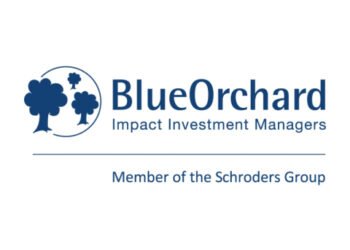Many people picture development work as government grants and charity. But a powerful engine for growth operates differently. The international finance corporation (IFC) tackles poverty by fueling businesses in developing countries.
This organization is part of the world bank group. Its unique mission is to support the private sector where it is needed most. Instead of lending to governments, it invests directly in companies.
The goal is to create jobs and boost local economies. This approach to international finance helps build stable markets. It connects global capital with local entrepreneurs who have great ideas.
As the largest global development institution focused on private enterprise, the IFC works in over 100 countries. It provides investments, advice, and manages assets to spur sustainable development.
The finance corporation aims to prove that fighting poverty and making a profit can go hand in hand. This creates a lasting impact that benefits everyone.
Key Takeaways
- The IFC is a member of the World Bank Group focused on private sector investment.
- It operates in developing nations to stimulate economic growth from within.
- Its work differs from traditional aid by investing in businesses, not governments.
- The institution provides investment, advisory, and asset-management services.
- It has a dual goal of reducing poverty and achieving financial sustainability.
- The IFC’s global reach spans diverse regions and over 100 countries.
Overview of the International Finance Corporation
Owned by 186 member nations, this entity focuses exclusively on business development in emerging economies. The international finance corporation stands apart within the world bank group with its unique mandate.
Definition and Core Mission
This institution tackles two ambitious goals: ending extreme poverty by 2030 and boosting shared prosperity. It believes sustainable development comes through empowering private enterprises.
The approach centers on creating opportunities for people in need. Instead of government aid, it provides direct support to companies.
Role within the World Bank Group
While other parts of the bank group work with governments, this organization fills a critical gap. It partners solely with private businesses and financial institutions.
Headquartered washington, D.C., the institution maintains a strong global presence. Most of its staff work directly in member countries, understanding local markets firsthand.
The world bank affiliate leverages financial resources and technical knowledge where private investment is scarce. This creates jobs and builds infrastructure from the ground up.
History and Evolution
Following World War II, economic visionaries saw the need for a specialized organization that could channel private investment into developing economies. This insight led to the creation of an institution focused on business development rather than government aid.
Founding and Early Years
Robert L. Garner, a world bank executive, championed the idea that private enterprise could drive development. His vision materialized in 1956 when the institution launched with just 12 staff and $100 million in capital.
The first investment came the following year—a $2 million loan to a Brazilian affiliate of Siemens. This demonstrated the organization’s commitment to industrial growth in emerging markets.
Key Milestones and Investments
A major evolution occurred in 1961 when the institution gained authority to make equity investments. The first equity stake went to a Spanish auto parts manufacturer in 1962.
Throughout the decades, the portfolio expanded significantly. Notable investments included stakes in Indian financial companies and support for Greek banks during the 2015 crisis.
Recent initiatives show a shift toward sustainability. A $37 million loan for plastic recycling in African nations creates jobs while reducing environmental impact. This reflects the ongoing evolution of development finance strategies.
Governance and Organizational Structure
Member countries exercise direct oversight through a two-tier governance system that guides the International Finance Corporation’s operations. This framework ensures that the institution remains accountable to its diverse global stakeholders while maintaining operational effectiveness.
Board of Governors and Executive Leadership
The board governors form the highest decision-making body, comprising one representative from each of the 186 member countries. These governors typically serve as finance ministers or treasury secretaries in their home governments.
Day-to-day governance falls to a 25-member board of directors who meet regularly at headquarters. The world bank group president chairs this board, maintaining institutional connections.
Executive leadership comes from Managing Director Makhtar Diop, appointed in 2021. His extensive experience in sustainable infrastructure development guides the corporation’s strategic direction.
Member Countries and Voting Rights
All 186 member countries participate as shareholders through paid-in capital contributions. This ownership structure gives each government voting rights proportional to their financial stake.
The voting system ensures that larger contributors have greater influence while maintaining representation for all member countries. This balanced approach reflects the institution’s global nature.
With over 3,400 employees worldwide, half stationed in field offices, the organization maintains strong local presence across its member nations. This decentralized structure enables responsive engagement with diverse markets.
Investment Services and Financial Instruments
The organization’s investment toolkit combines traditional banking products with innovative financial solutions. This approach helps businesses access the capital they need for growth.
Services include loans, equity stakes, and trade financing. The institution also offers syndicated loans and structured products. Client risk management and treasury services complete the comprehensive package.

Loan Products and Equity Investments
Standard loans typically span seven to twelve years. The institution has innovated by offering local currency options alongside traditional hard currency financing.
This reduces foreign exchange risk for borrowers. The International Finance Corporation committed $5.7 billion in new loans during one fiscal year.
Equity investments became part of the strategy in 1961. The institution typically takes five to twenty percent stakes in companies. This supports businesses while sharing in their success.
Syndicated and Structured Finance Programs
The syndicated loan program started in 1957. It has channeled billions from over 550 financial institutions into development projects.
Syndications reached $4.7 billion in one year alone. Structured financing helps clients securitize assets like mortgages and credit card debt.
This approach enhances creditworthiness for projects in emerging markets. The finance corporation‘s commitment reached a record $43.7 billion in a recent fiscal year.
Advisory Services and Asset Management
Technical assistance and expert guidance form a crucial component of the institution’s development strategy alongside financial investments. These advisory services help businesses and governments make better decisions.
Advisory Services for Sustainable Development
The organization provides comprehensive advisory support for corporate decision-making. This includes guidance on business strategy, environmental social impact, and long-term sustainability.
These services target governance, managerial capacity, and corporate responsibility. The institution helps companies adopt international best practices.
A key focus involves encouraging policy reforms that improve trade conditions. The international finance corporation also advises governments on infrastructure development.
Managing Capital in Emerging Markets
The Asset Management Company manages capital funds for emerging market investments. Established in 2009, it handles funds from the institution and third-party investors.
This subsidiary managed several major funds as of 2011. These included equity and debt funds totaling billions of dollars.
The Sustainability Framework outlines the approach to risk management. Its standards serve as benchmarks for corporations and governments worldwide.
Private Sector Focus: International Finance Corporation
Private enterprise drives economic progress in regions needing development most. The international finance corporation champions this approach by focusing exclusively on business growth.
This strategy fills a critical gap left by traditional aid models. It empowers local entrepreneurs to build sustainable economies from within.
Supporting Businesses in Developing Countries
The institution ensures companies in needy nations can access markets and financing. This support helps businesses scale operations and create employment.
In fiscal 2021, clients helped generate 1.6 million jobs. The finance corporation also assists with infrastructure, education, and health care improvements.
Recent commitments include $33 million for African and Latin American projects. These investments target manufacturing, financial markets, and essential infrastructure.

Global Trade Finance and Local Currency Initiatives
The Global Trade Finance Program guarantees payments for over 200 banks worldwide. This reduces risk for international trade involving emerging market businesses.
In 2011, the program issued $4.6 billion across 3,100 guarantees. More than half targeted the poorest member nations.
Looking ahead, cities in developing regions could attract $29 trillion for climate projects by 2030. This represents massive potential for sustainable growth.
Conclusion
As global challenges intensify, the International Finance Corporation‘s role in mobilizing private capital for sustainable development becomes increasingly vital. This institution within the world bank group has demonstrated remarkable financial strength while pursuing its core mission.
The organization’s financial performance underscores its sustainability. In the 2011 fiscal year, it reported $2.18 billion in income before grants. Net income reached $1.58 billion that same year. Total assets stood at $68.49 billion, supporting extensive lending and investment operations.
By 2022, the portfolio of investments built by the corporation exceeded $63 billion. These resources support critical infrastructure and business projects across developing countries. The institution maintains AAA credit ratings from major agencies.
Despite these achievements, the corporation faces legitimate criticism. NGOs question fund tracking through financial intermediaries. Some argue it should focus more on small businesses rather than large companies.
Environmental concerns also persist regarding certain agricultural projects. Balancing development goals with sustainability remains an ongoing challenge. The corporation must navigate these tensions while maintaining its private sector focus.
Looking ahead, the institution’s expertise in international finance will be crucial. As needs grow in emerging countries, its ability to mobilize capital and support sustainable practices becomes more essential than ever.
FAQ
What is the main goal of the International Finance Corporation?
The main goal is to promote economic growth in developing nations by supporting the private sector. It aims to create jobs, reduce poverty, and improve people’s lives through its investments and advisory work.
How is the IFC connected to the World Bank?
The IFC is a member of the World Bank Group. While the World Bank often works with governments, the IFC focuses exclusively on private businesses and projects in emerging markets to spur development.
What types of financial help does the IFC offer?
It provides a range of services, including loans, equity investments, and trade finance. These tools help companies fund projects, expand operations, and access capital in challenging markets.
Does the IFC only provide money, or does it offer other support?
Beyond financing, it offers vital advisory services. This includes expert advice on improving business operations, meeting environmental and social standards, and building essential infrastructure.
Who owns and governs the IFC?
The organization is owned by its 186 member countries. A Board of Governors, representing these nations, provides strategic direction and oversees its activities.
Why does the IFC focus on the private sector?
A strong private sector is a powerful engine for development. It drives job creation, builds sustainable economies, and delivers essential services like power and healthcare to communities.




